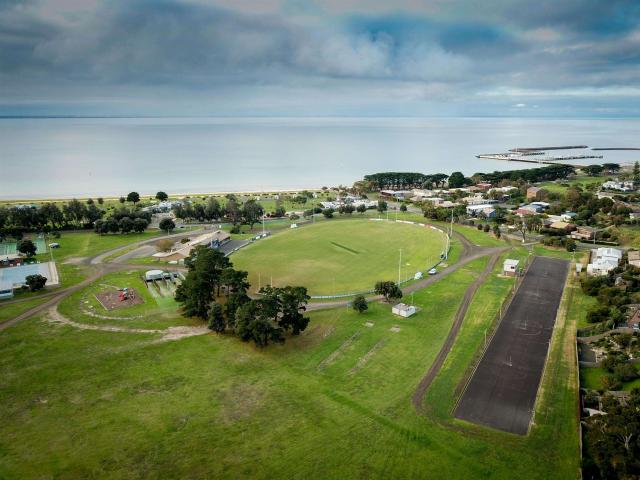The future of the Portarlington Recreation Reserve now has a framework, with the City of Greater Geelong council last week adopting a new masterplan.
The refurbishment of the existing main football and cricket pavilion, the extension of the tennis and netball pavilions and improved passive recreation spaces all feature in the plan.
Other developments identified in the plan include upgrading the entrances, improving car parking, modernising the cricket nets, renovating the tennis and netball courts and adding multi-use sporting facilities.
The development of accessible pathways and connections along with way-finding signage will further enhance the Reserve.
The City has allocated $1.157 million within the 2021/22 and 2022/23 budget periods for the Portarlington Recreation Reserve Pavilion Upgrade project.
Community engagement on the draft master plan resulted in 289 contributions and included a face-to-face drop-in session with the feedback informing the final plan.
Deputy mayor Trent Sullivan said the council was delighted to be able to unveil the next chapter of recreational developments in the town.
“The City understands the importance of providing facilities that support community participation,” Cr Sullivan said.
“With so many varying interests within the Portarlington community, it’s exciting to be able to ensure that the residents’ tastes in recreation, whether passive or active, are able to be catered for.”
Bellarine Ward councillor Jim Mason agreed the developments would be a welcome addition to the northernmost community on the Bellarine Peninsula.
“Developments of this kind will improve opportunities for people of all backgrounds, genders, abilities, cultures and beliefs to utilise the facility,” Cr Mason said.
“It’s particularly pleasing to see that the master plan supports community participation, while at the same time enhancing and protecting the values of the Reserve by minimising its environmental footprint.”
The implementation of the master plan will require funding over the next 10 years and come at a total cost of $16.3 million.







